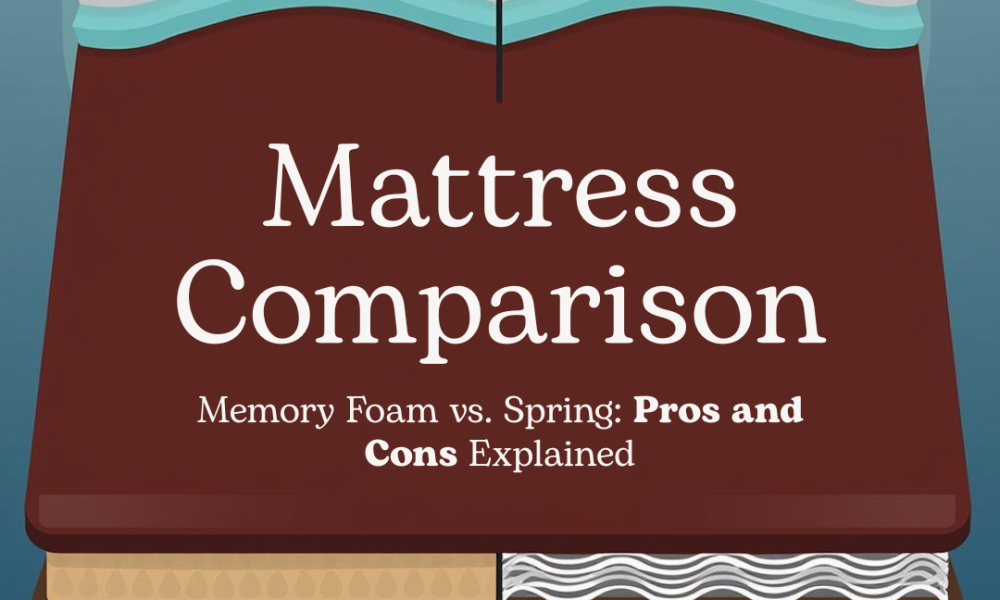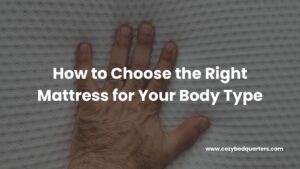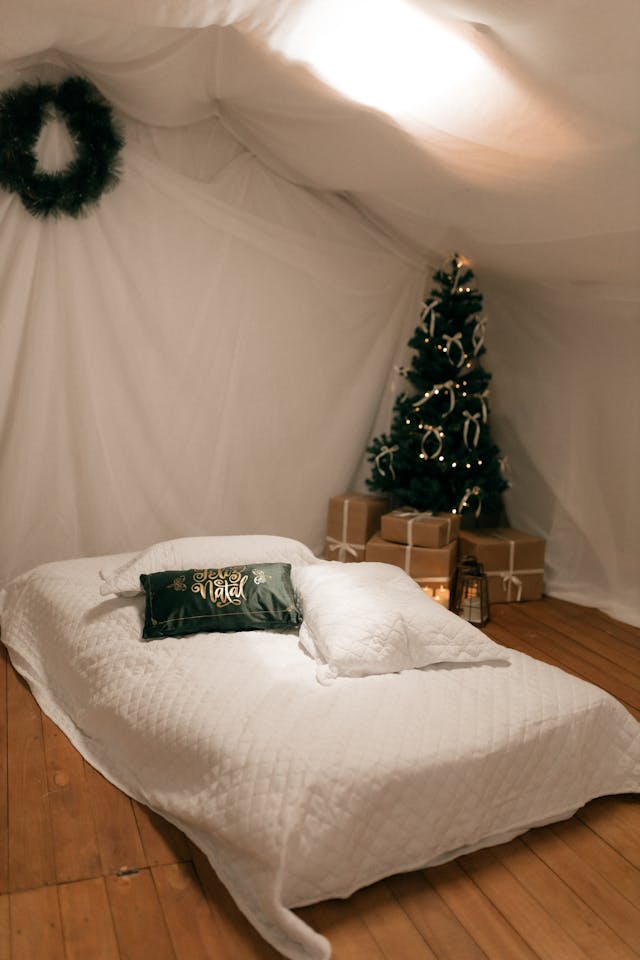Memory Foam vs Spring Mattress: King-Size Comparison
If you’re choosing a king-size bed, the fastest answer is this: pick
memory foam for superior pressure relief and motion isolation, choose a
spring mattress for firmer support and cooler airflow, and go
hybrid if you want the best of both. This guide compares
memory foam vs spring mattress types—performance, durability, price, and sleep-position fit—so you can buy with confidence. For broader options, see our best king mattress guide.
Key Takeaways on Memory Foam vs Spring Mattress
- Pressure relief & couples: Memory foam minimizes pressure points and motion transfer best.
- Cooling & bounce: Springs run cooler and feel more responsive; great for combination sleepers.
- Support feel: Back/stomach sleepers often prefer spring or a firmer hybrid; side sleepers usually love foam.
- Longevity: Quality foam lasts ~8–10 years; traditional springs ~7–8; hybrids can balance both.
- Price: Springs start cheaper on average; foam and hybrids span wider ranges based on density/coils.
- When unsure: A hybrid king is a smart middle ground for most couples.

Quick Comparison: Memory Foam vs Spring Mattress
Snapshot first—then dive deeper into pros, cons, and fit by sleep position.
| Feature | Memory Foam | Spring Mattress |
|---|---|---|
| Pressure Relief | ✅ Excellent | ❌ Moderate |
| Motion Isolation | ✅ High | ❌ Low |
| Cooling | ❌ Can Sleep Hot | ✅ High Airflow |
| Lifespan | 8–10 Years | 7–8 Years |
| Price Range | $600–$2,500+ | $500–$1,800+ |

What is a Memory Foam Mattress?
Answer first: A memory foam mattress contours closely for standout pressure relief and motion isolation—ideal if you want a “hugged” feel and fewer partner disturbances.
A key part of the memory foam vs spring mattress debate is how each material responds to body pressure and motion. Memory foam uses viscoelastic foam that molds to your shape for a supportive and comfortable sleep surface. Originally developed by NASA, it’s prized for pressure relief and quiet performance.
Pros of Memory Foam Mattresses
Summary: Choose memory foam if pressure relief, alignment, and motion control are your top priorities.
- ✅ Superior Pressure Relief – Conforms to the body and reduces pressure points (Best Mattress for Back Pain).
- ✅ Motion Isolation – Ideal for couples; minimizes disturbances from movement.
- ✅ Spinal Alignment – Supports proper posture and can reduce back pain.
- ✅ Silent Performance – No creaking or noise when shifting positions.
Cons of Memory Foam Mattresses
Summary: Be mindful of heat, slow response, and initial off-gassing; higher-density foams are heavier to move.
- ❌ Heat Retention – Can sleep hot; gel- or open-cell foams can help.
- ❌ Slower Response Time – Some feel “nested” or less mobile.
- ❌ Off-Gassing Odor – Temporary new-foam smell.
- ❌ Heavy Weight – Can be tough to rotate or move.

What is a Spring Mattress?
Answer first: A spring (innerspring) mattress uses coils for firmer, more breathable support with a bouncier, on-top-of-bed feel.
Spring mattresses utilize a system of coils or springs to provide support. Traditional innerspring models have been used for decades, while modern versions incorporate pocketed coils for better comfort and motion isolation.
Pros of Spring Mattresses
Summary: Pick springs for airflow, ease of movement, and classic buoyant support.
- ✅ Firm Support – Great for back and stomach sleepers.
- ✅ Better Airflow – Coils enhance breathability and cooling.
- ✅ More Bounce – Responsive, easier to move on.
- ✅ Budget-Friendly Options – Often more affordable entry pricing.
Cons of Spring Mattresses
Summary: Expect more motion transfer, potential squeaks, and less contouring than foam.
- ❌ Less Pressure Relief – Can create pressure points for side sleepers.
- ❌ More Motion Transfer – Movement can travel across the bed.
- ❌ Potential for Noise – Springs may squeak with age.
- ❌ Shorter Lifespan – Coils can wear out faster, leading to sagging.

Which Mattress is Best for Your Sleep Position?
Answer first: Side sleepers usually prefer memory foam; stomach sleepers often do better on springs; back sleepers and couples can go either, depending on firmness and priorities.
| Sleep Position | Best Mattress Type |
|---|---|
| Side Sleepers | Memory Foam – Better contouring for shoulders/hips. |
| Back Sleepers | Either – Foam relieves pressure; springs offer firmer support. |
| Stomach Sleepers | Spring – Helps prevent midsection sink for alignment. |
| Couples | Memory Foam – Superior motion isolation. |
| Hot Sleepers | Spring – Naturally cooler due to airflow. |

Durability and Longevity
Answer first: Expect ~8–10 years from quality memory foam and ~7–8 from most innersprings; hybrids can split the difference depending on foam density and coil count.
- Memory Foam – Lasts 8–10 years with proper care (How Long Does a King Size Mattress Last?).
- Spring Mattress – Typically lasts 7–8 years but may sag sooner.
- Hybrid Models – Combine both technologies for a balance of comfort and durability.
Pricing: Which is More Cost-Effective?
Answer first: Springs usually start cheaper; foam and hybrids span wider pricing with performance upgrades (cooling foams, zoned coils) driving cost.
| Mattress Type | Budget Range (King) |
|---|---|
| Memory Foam | $600 – $2,500+ |
| Spring | $500 – $1,800+ |
| Hybrid (Memory Foam + Spring) | $900 – $3,000+ |
Final Verdict
Answer first: Both memory foam and spring mattresses can be excellent for a king bed—choose foam for pressure relief and motion damping, springs for airflow and firmer support; a hybrid blends both for the broadest appeal.
For expert advice, see the Sleep Foundation – Mattress Buying Guide and Mayo Clinic – Sleep Tips & Back Pain Relief.
FAQ
Quick answers using structured markup for rich-feature compatibility.
- Is a memory foam mattress better than a spring mattress for a king bed?
- It depends on priorities: memory foam wins for pressure relief and motion isolation, while springs win for cooling and bounce. Many couples choose a hybrid.
- Which lasts longer, memory foam or spring?
- Quality memory foam often lasts ~8–10 years; many spring beds last ~7–8. Construction (foam density, coil gauge) matters more than material alone.
- Is memory foam too hot for hot sleepers?
- Some foams retain heat. Look for gel/open-cell foams or consider a spring or hybrid for naturally better airflow.
- What firmness is best for a king mattress?
- Side sleepers tend to like medium to medium-soft; back sleepers often prefer medium to medium-firm; stomach sleepers typically need firmer support.
- Is a hybrid mattress worth it?
- If you want foam comfort plus coil support/cooling, yes—hybrids are a strong “meet-in-the-middle” choice for king-size beds.
Related reading from Cozy Bed Quarters
Other reading we found popular























